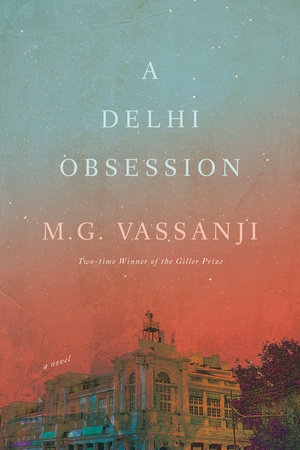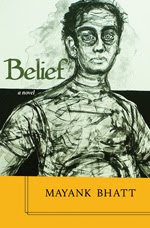There is a perfect storm brewing in Ontario over Gurrtan
Singh’s bill to annually observe the first week of November as Sikh Genocide
Week.
Gurratan Singh is a Member of the Provincial Parliament in
Ontario from Brampton East. He is Jagmeet Singh’s brother. Jagmeet Singh leads
the National Democratic Party of Canada.
Expectedly, there is anger and angst among a section of the
Indo-Canadian community at Gurratan’s move. They are at pains to explain that
the massacre of Sikhs in 1984 in the wake of Indira Gandhi’s assassination by
her Sikh guards happened a long time ago and that since then India has moved
on.
There is no denying this fact.
Most Indians acknowledge that 1984 was a terrible chapter in
India’s history. Contemporary Indian history has innumerable instances of the
Hindu majority population going on a rampage against other religious
minorities, most notably against the 200 million strong Muslim minority. Under
the Narendra Modi government it has become institutionalised, it is the new normal.
Those unfamiliar with present condition of the
religious minorities in India, especially the Muslims, should watch the
serialisation on HBO of Philip Roth’s classic novel The Plot Against America.
The living nightmare that America could have become for its
Jewish population had Teddy Roosevelt lost to Charles Lindbergh (the theme of
Roth’s novel) is the fearsome dystopian reality in which most of the Muslims of
India survive in present times.
But coming back to Gurratan’s bill. Dr. Manmohan Singh, when
he was the Prime Minister of India, apologised in the Indian Parliament to
Sikhs for 1984 riots in which the Sikhs were targeted on the streets of India’s
capital New Delhi.
A sizeable section of the burgeoning Indo-Canadian
population (estimated to be 1.6 million) feels that Gurratan is not justified
in trying to keep the memory alive of an incident that happened so long ago.
They felt the same when Harinder Malhi, the then Liberal
MPP, succeeded in 2017 in getting the Ontario legislature pass the bill that
defined the Sikh massacre of 1984 as genocide.
There are many unresolved questions and emotions that
surround this angry debate.
Should we forget a massacre?
What purpose does an annual remembrance serve?
Would it not be better if we just leave the past behind
where it belongs, and just move on to a future that is harmonious and without
acrimony?
Nelson Mandela gave us the right perspective about not
forgetting injustices. He said (in 1995), “Reconciliation does not mean
forgetting or trying to bury the pain of conflict, but that reconciliation
means working together to correct the legacy of past injustice.”
That is why we remember the Jewish Holocaust and that is why
we must remember the massacre of Sikhs in 1984 – because these were crime
against humanity but more importantly, our societies remain prone to targeted
violence against religious and racial minorities.
Remembering a grave wrong helps us relate to the wounds that
may have been inflicted several generations back but which are raw and will remain fresh
forever in present and future generations.
Among my friends I count Sikhs born and raised in Canada and with no real experience of 1984. They turn emotional when talking about the anti-Sikh riots that engulfed Delhi and parts of northern India. It is a part of their collective memory.
In the act of remembrance is the compulsion of not forgetting.
And it is important not to forget – for those who suffered,
and especially for those who did not suffer, and for those who made others
suffer. Injustice must not be allowed to be forgotten. Society must
be reminded of it regularly.
Let me digress briefly to illustrate how the Indian society
is hardwired to forget injustice.
The hierarchical structure of the Indian society, which has
been given to it by the caste system, has resulted in the domination
of the upper castes who are a numerical minority. They have traditionally
subjugated the lower castes and religious minorities.
The rise of the Hindu Right in India in the last four
decades has been a direct fallout of the mass conversion to Islam of the Dalits
of Meenakshipuram village in Tamil Nadu in 1981.
The upper caste would not give equal status to Dalits or
treat them with respect, but when they decided to adopt another religion, they
(the Hindu upper caste) launched a vigorous campaign that has lasted for four
decades and has led to the Hindu Right occupying the mainstream.
The Hindu Right has successfully throttled all other
alternative political and social ideologies. The continued deprivation of justice to Left-Liberal activists Anand Teltumbde and Gautam Navlakha is an illustrative
example.
In the context of the Sikh massacre of 1984, a blatantly
spurious argument offered is that the Sikh militants killed thousands of Hindus
from the late 1970s to the mid 1990s, when the menace of Sikh militancy at its
apogee in India.
Yes, that is correct. But it should not be forgotten that
the rise of Sikh militancy had its roots in the petty and devious politics of
the Indian establishment dominated by the Congress party at that time.
Jarnail
Singh Bhindrawale was a genie that Congress got out of the lamp, who then
refused to quietly return to the obscurity. In trying to control the insurgency that Bhindrawale masterminded from the precincts of the Golden Temple, the holiest of shrines in
India, the Indian state did not leave anything to imagination when it
unleashed its full force to against the Sikh population in Punjab.
It was state terrorism against its own people that lasted
for more than a decade, and was called off only when the establishment was
completely satisfied that it Sikh militancy had been extinguished from Punjab.
Gurratan Singh is, of course, aiming for political mileage and he is unconcerned that the bill will keep the Indo-Canadian communities divided; perhaps that is precisely what he wants, as it would help him politically, just as it has helped Jagmeet Singh politically to equivocate on the Air India Flight 182 bombing.
But the interests of the Sikh community should not be linked to political shenanigans. Common people, who work hard and look after their families,
and mind their own business, would like nothing more than be rid of negativity,
and political and cultural influences that religiopolitical leader wield on
them and their lives.
It is time for a radical shift in the approach to finding a solution to this logjam. Leaders who speak for the community – whether they are
political or community leaders – should call for a town hall meeting in
Brampton and have an open dialog on the future direction of peaceful
coexistence between all Indo-Canadians.
Another significant step that must be taken in this context
is to invite Sikh families who suffered in the 1984 riots and are now settled in Canada, and the Indo-Canadian community should publicly
acknowledge their victimhood.
The only way forward is to have a constructive
dialog that involves all sections of the Indo-Canadian society – Sikhs, Hindus,
Muslims, Christians, and adherents of other faiths.
Remembering a tragedy should not become a reason to hate.











